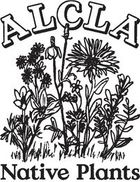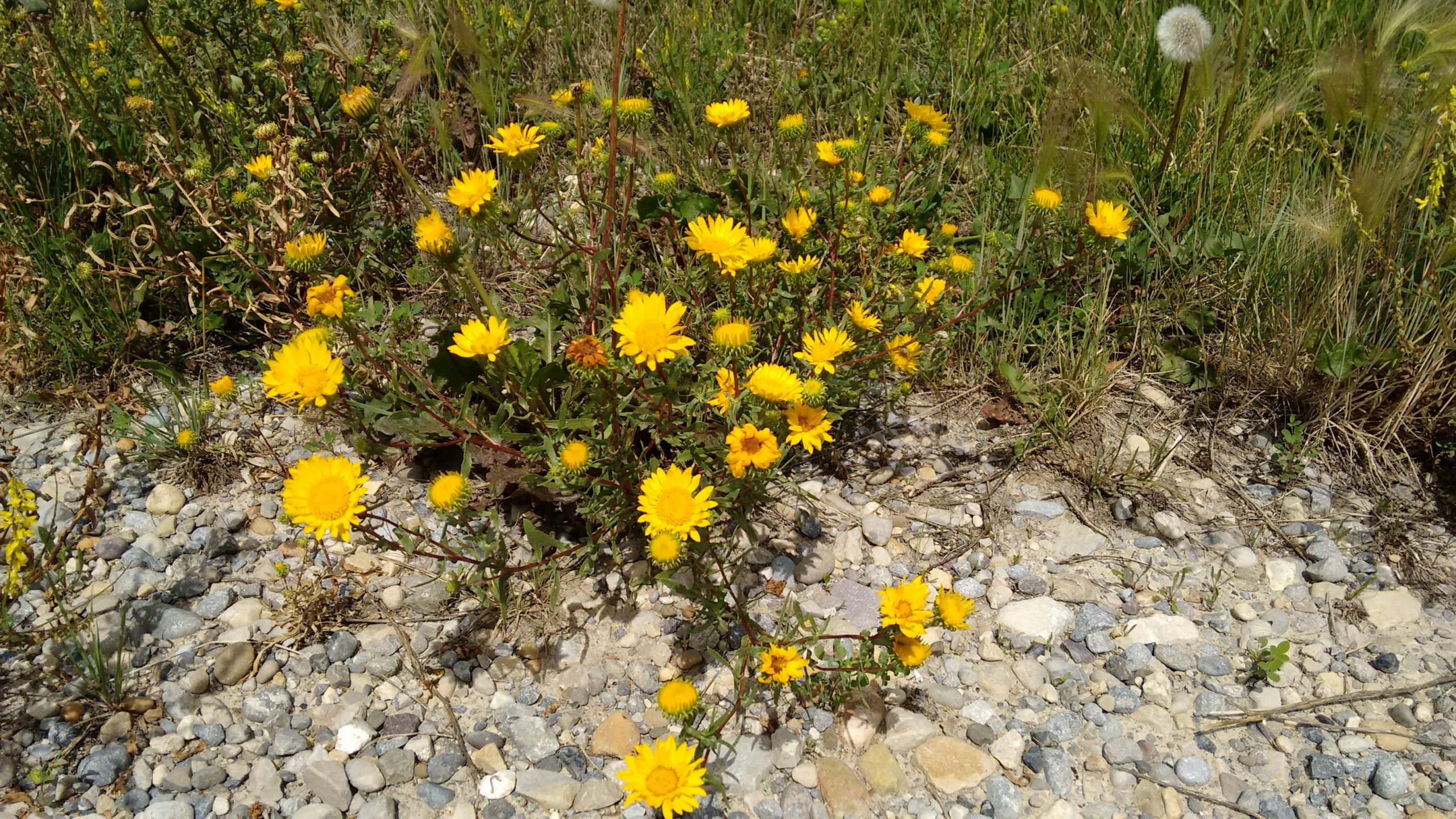There are many great reasons to grow native plants: they are climate-adapted, drought-resistant, and support pollinators and wildlife–which are currently in decline. What many people may not realize is that many native plants are also a lovely addition to an herb garden. We have selected seven of our favourite native plants to add a bit of wilderness to your favourite herbal tea blend.
Giant Hyssop (Agastache foeniculum)
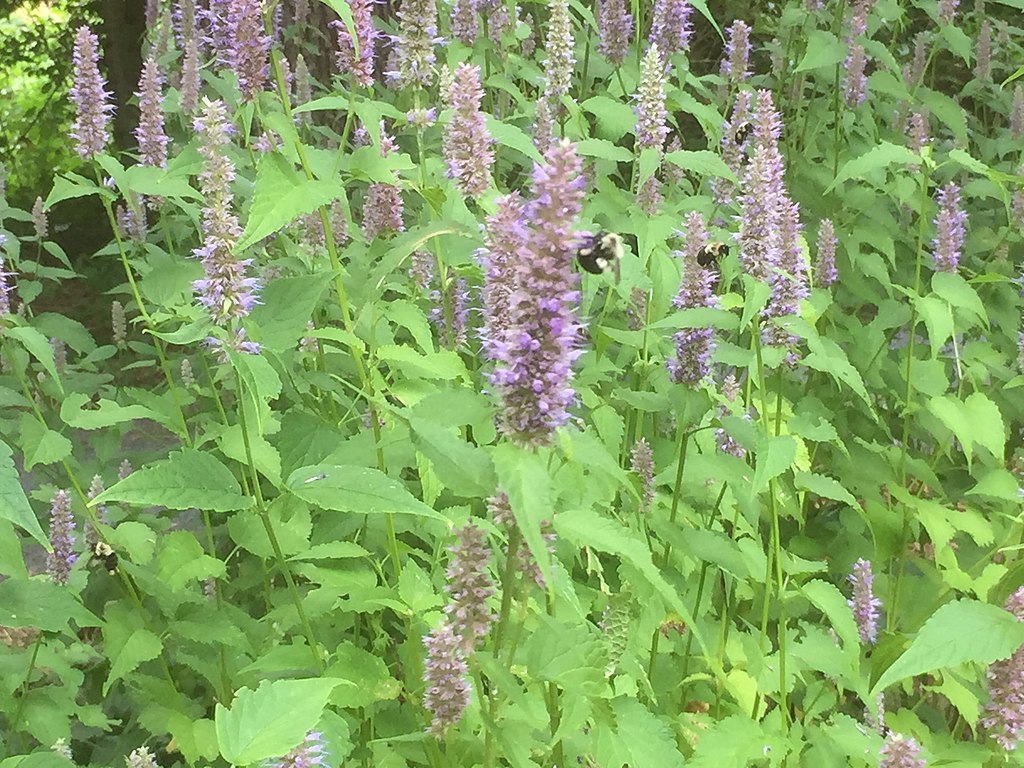
Giant Hyssop is a beautiful perennial in the mint family that can be grown in both full sun and part shade. The beautiful purple blooms emerge in the summer and are a visual delight and an important source of food for pollinating insects. It is the leaves, however, that are most desirable for tea as they have a gentle fragrance of anise when crushed. Use the leaves fresh or dried to make a pleasant herbal tea. Traditional medicinal usage includes cough relief and lowering fevers.
Fireweed (Chamerion angustifolium)
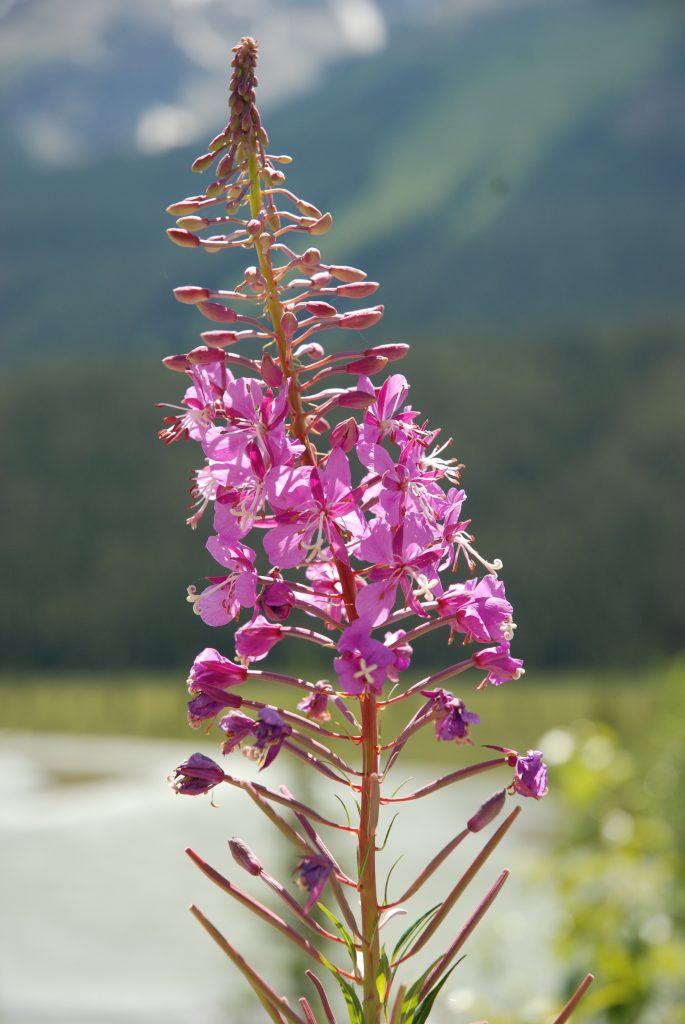
Fireweed is one of our tallest native perennials, growing up to 9 feet tall in a single season. They are very versatile in terms of growing conditions and can handle full sun to part shade as well as dry to moist soil conditions. The name Fireweed comes from the fact that they are an early colonizer after a fire. When passing through regions that have recently experienced wildfires, take a moment to notice the purple fields of Fireweed that bloom in July and August.
The leaves and flowers can be used unprocessed for tea. It is, however, worth learning the simple process of tea leaf oxidation to create the most delicious herbal black tea substitute you have ever tasted. The process of oxidizing Fireweed leaves originates in North-eastern Europe. In Russia, this delightful beverage is called Ivan’s Chai. The process entails wilting, crushing, and rolling the leaves followed by allowing the leaves to oxidize over several days before stopping the process with heat in the oven and then, finally drying them.
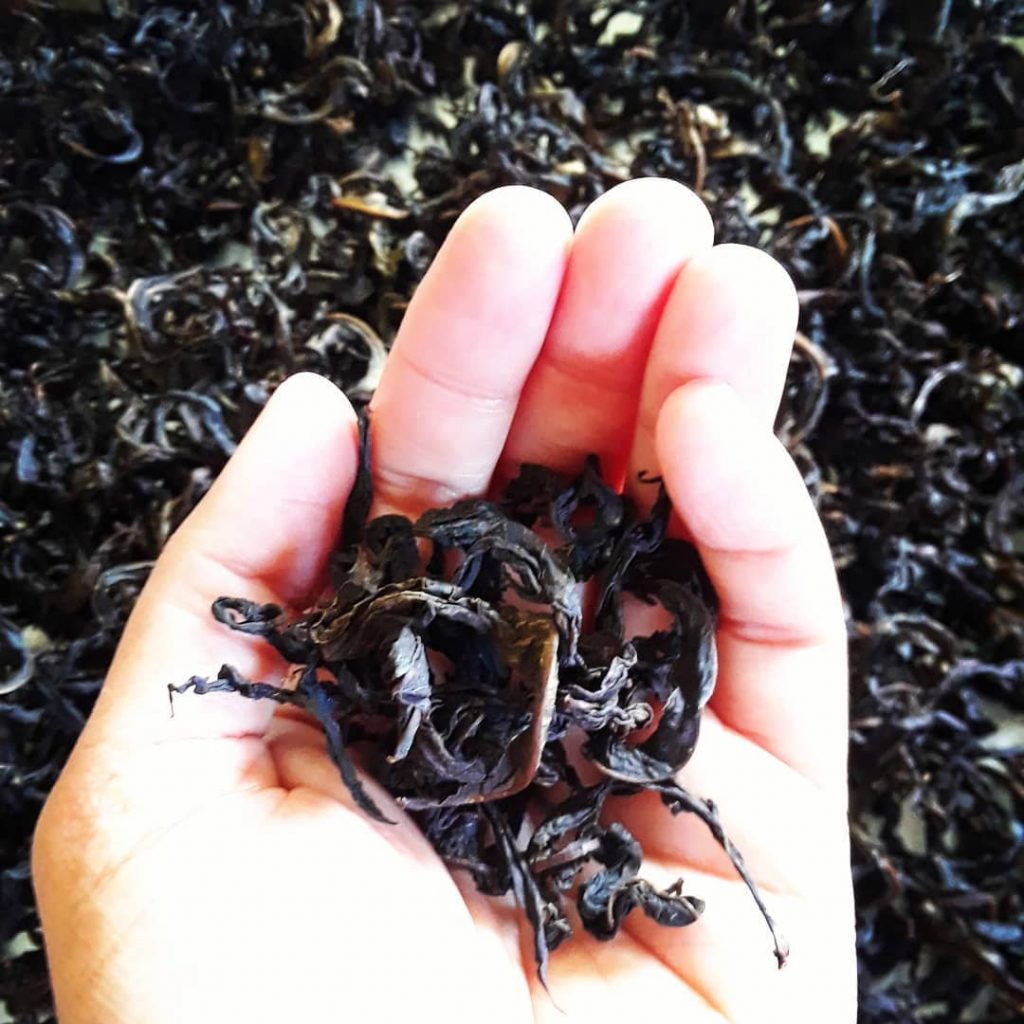
You can learn the process of creating Ivan’s Chai here.
Sweet-Scented Bedstraw (Galium triflorum)

Sweet-scented Bedstraw is a low, creeping plant that can also climb in the right conditions. This plant prefers part to full shade and average to moist, nitrogen-rich soil.
We are fans of all teas made from Galium species but Sweet-scented Bedstraw is our favourite. As the name suggests, this species of Bedstraw has a sweet vanilla-like aroma due to the presence of coumarins in the plant. If you know how to use the European species Sweet Woodruff (Galium ordoratum) then you will already be set to utilize Sweet-Scented Bedstraw. It can be used to flavour cordials and makes very pleasant, mild herbal tea.
Gumweed (Grindelia squarrosa)
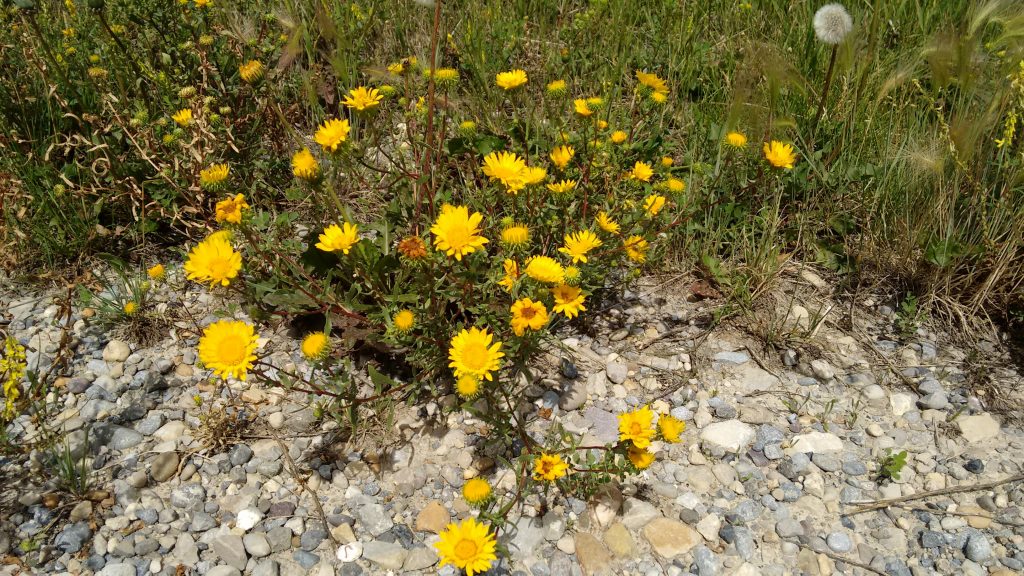
Gumweed is a biennial to short-lived perennial that can handle growing in very tough conditions. Adapted to full sun and very dry soil conditions, Gumweed is a great drought-resistant garden plant. Once the beautiful yellow flowers bloom, allow the plant to go to seed and new plants will replace the original parent.
Gumweed has a sticky, gum-like texture that covers the entire plant. This highly aromatic “gum” is what gives a unique and potent flavour to herbal tea. You don’t need much to add a potent yet enjoyable flavour to tea. Traditionally, Gumweed is used to soothe sore throats and relieve cough.
Wild Chamomile (Matricaria discoidea)
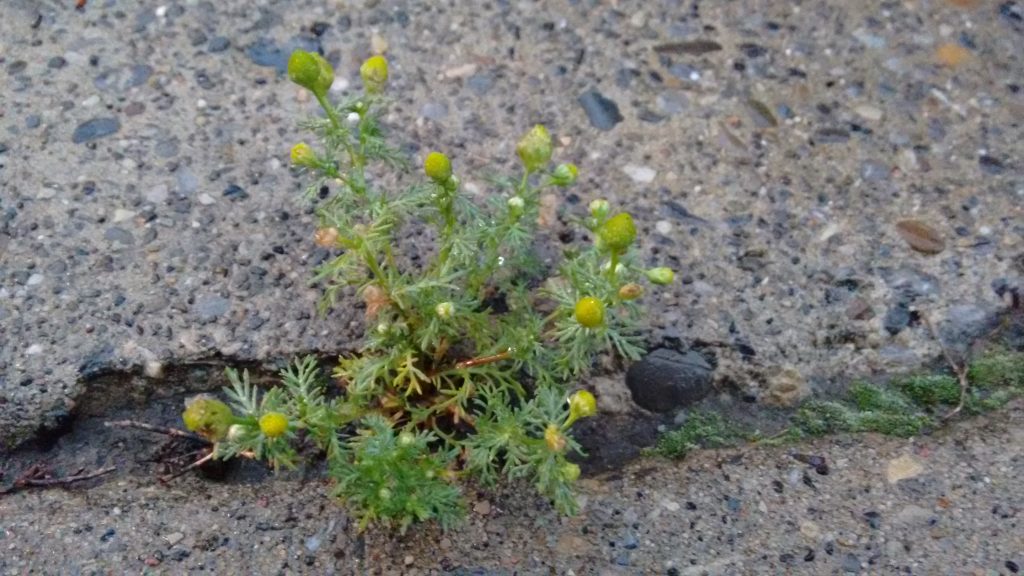
Wild Chamomile is an annual plant known for its ability to grow in unexpected areas such as between the cracks in sidewalks or asphalt. Despite the perception of being a weed, Wild Chamomile is a native species that is well-adapted to disturbance and is important early colonizing plant species. Simply allow the plant to go to seed and new plants will replace the parent over subsequent years. Your garden will be filled with this delightful plant. You can remove excess plants, if you like, and dry them for tea.
As the name suggests Wild Chamomile tastes exactly like the poplar German Chamomile that can purchased at grocery stores. A few teaspoons of fresh or dried Wild Chamomile leaves and flowers are sufficient to make a delicious and fragrant pot of tea. Traditional medicinal usage includes calming anxiety and reducing bloating and indigestion.
Wild Mint (Mentha arvensis)
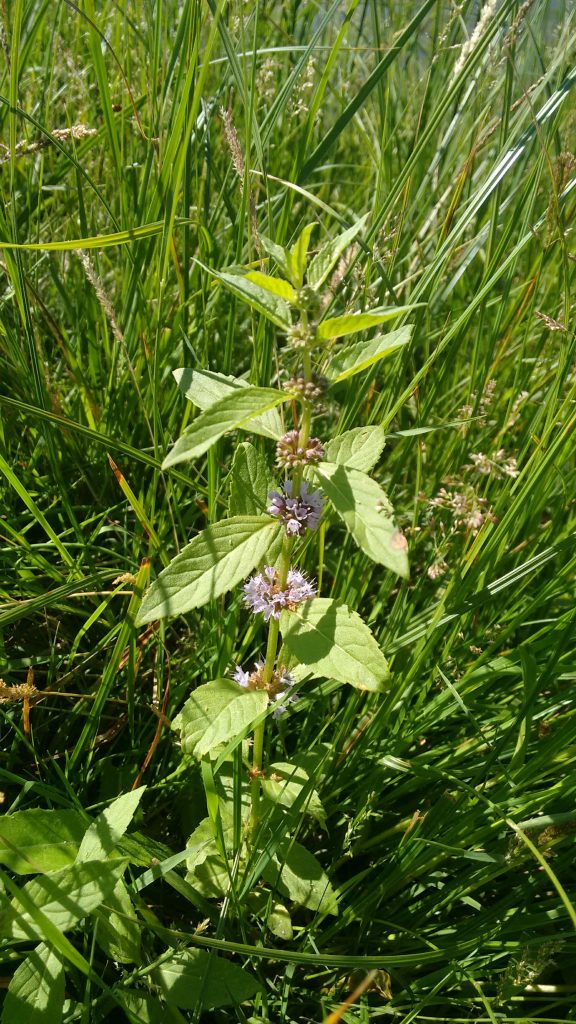
Wild Mint is a perennial species that is happy to fill a moist site either in full sun or part shade. The dainty white or purple blooms are found at leaf nodes during the summertime. In the wild, you will find this species most abundant near waterways and wetlands. Wild Mint is similar to popular species of cultivated mint such as Spearmint and Peppermint. Wild Mint has its own unique flavour profile but is best likened to Spearmint. Use the leaves fresh or dried to make a powerful cup of mint tea. This wild species tends to be much more potent than cultivated varieties so a little goes a long way. Traditional medicinal usage includes relief from bloating and sinus congestion. Mint teas should be avoided after meals if you suffer from heartburn.
Beebalm (Monarda fistulosa)
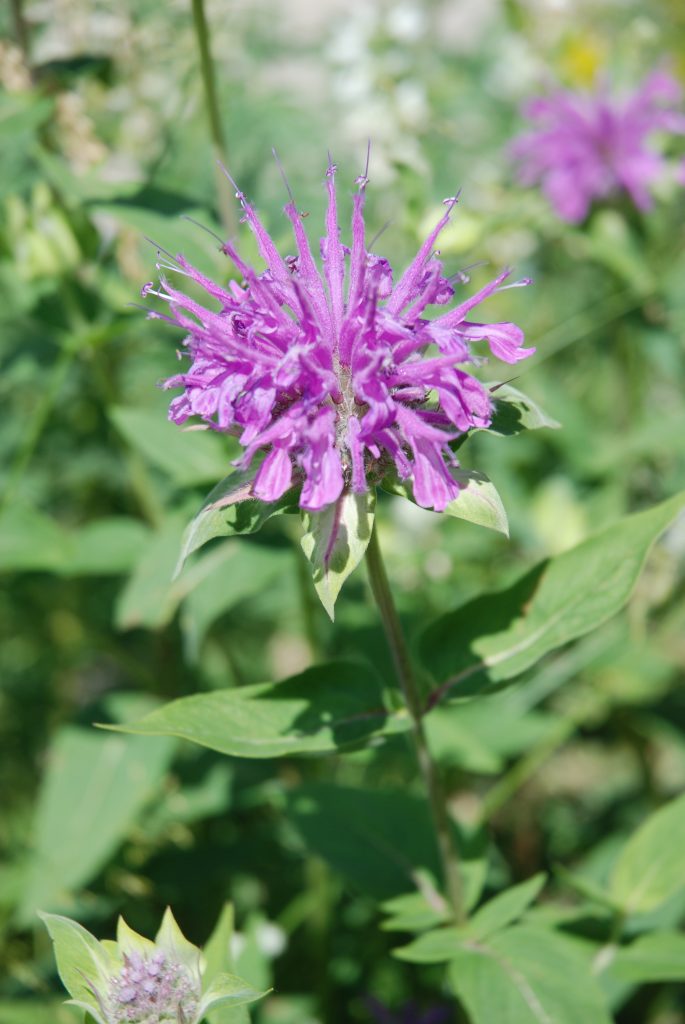
Beebalm is a drought-tolerant perennial in the mint family that can handle full sun to part shade in dry to moist soil conditions. This summer flowering plant is well-loved by pollinating insects as the name suggests.
Beebalm’s flavour profile is identical to the familiar garden herbs Oregano and Thyme, the main difference being that Beebalm is stronger. Only a few fresh or dried leaves are required to flavour an entire teapot. The traditional medicinal usage includes use as a potent antimicrobial. Beebalm is our go-to plant to help fight off colds before they get a chance to settle in.
Please note that although Wild Chamomile and Sweet-scented Bedstraw are not in our 2021 catalogue, they are currently available for sale.
